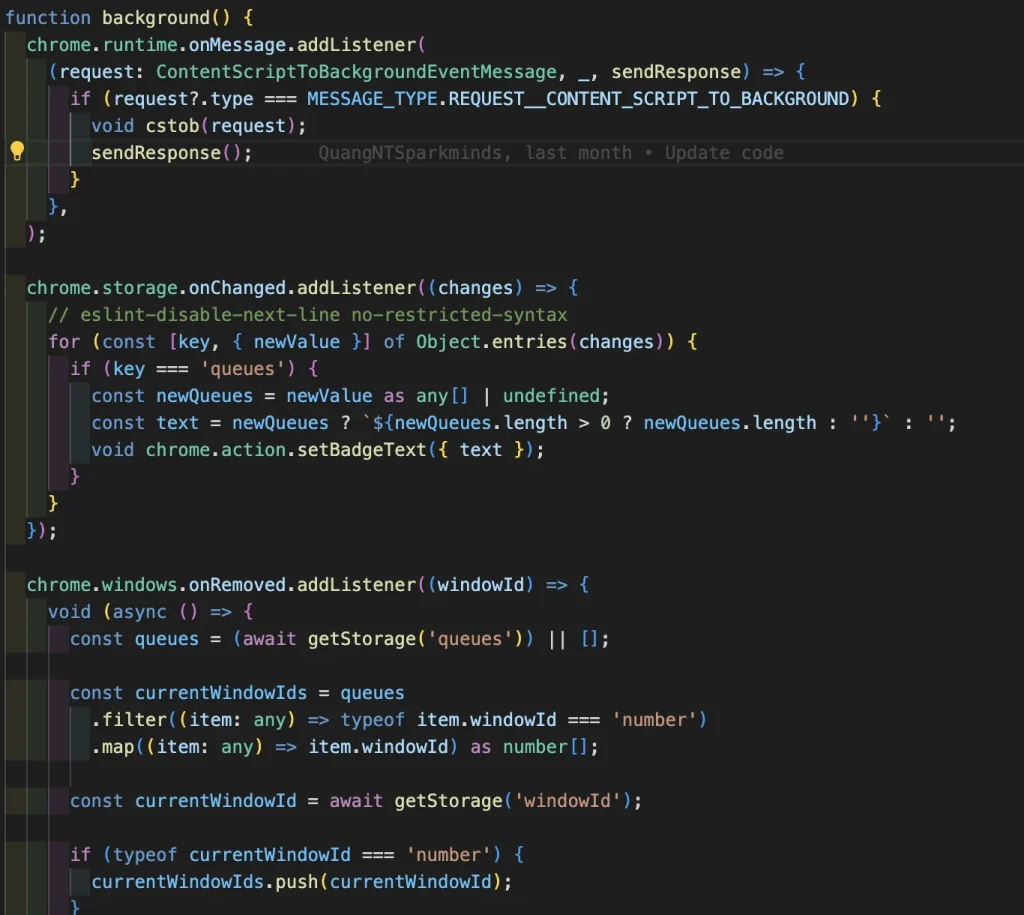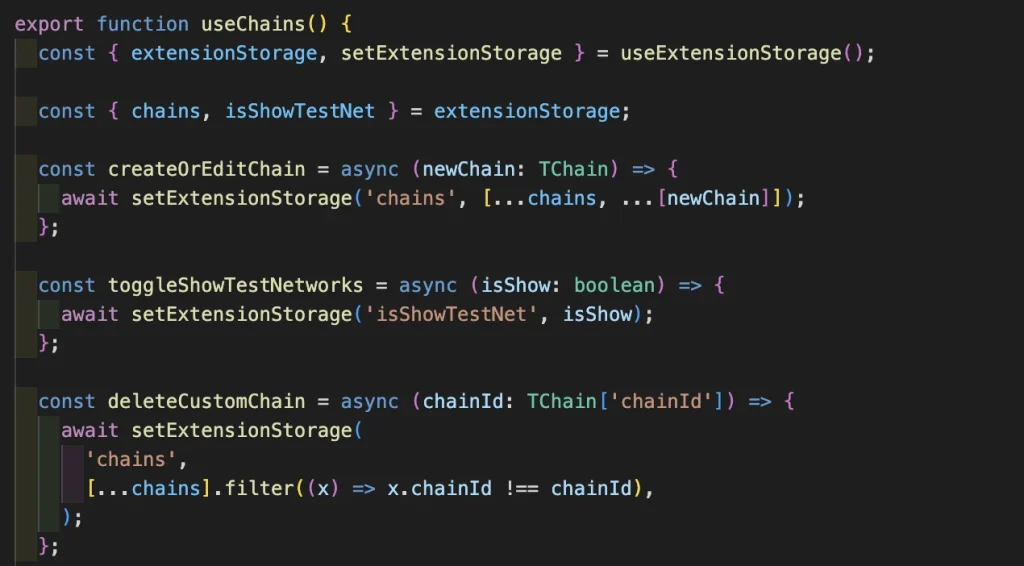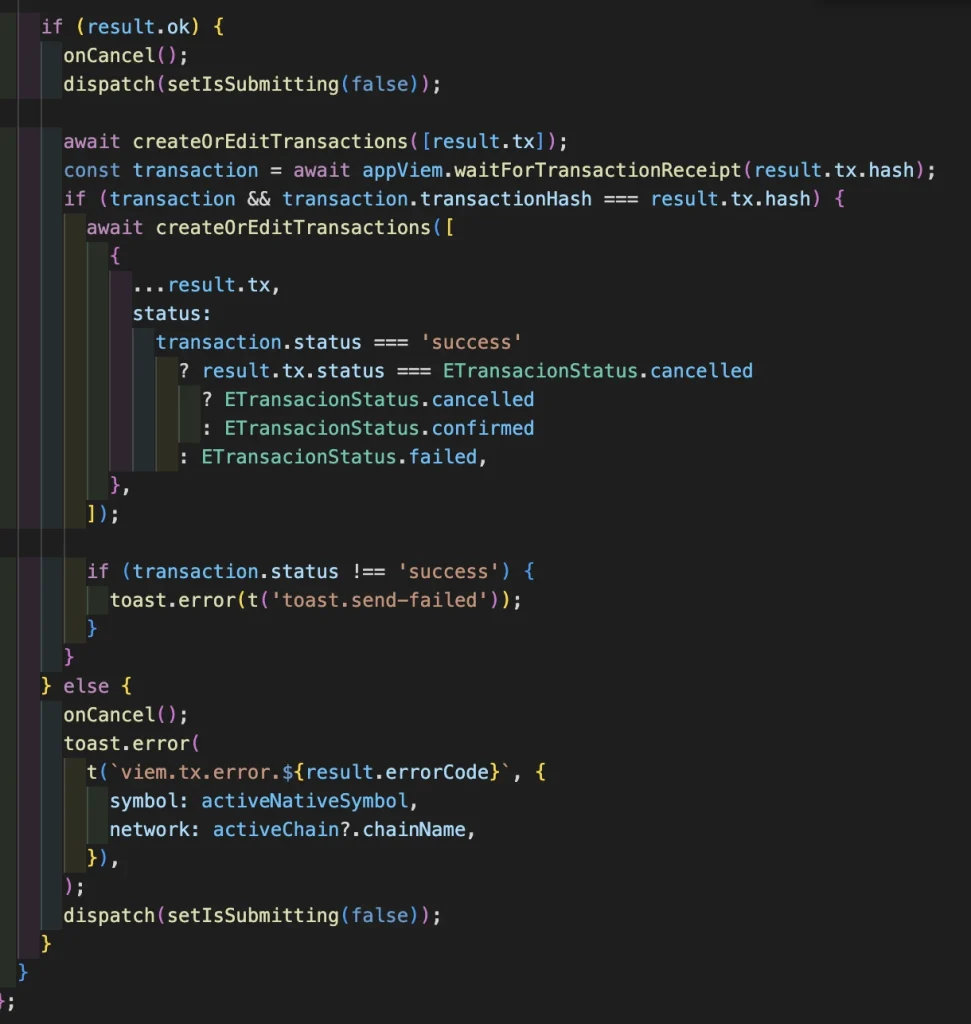Along with the development of blockchain technology, Cryptocurrencies and assets have become more popular. It leads to a high demand for crypto wallets, that help users can safely store their tokens, cryptocurrencies, NFTs… In this article, we will guide you step-by-step on how to build a Chrome extension for a crypto wallet
Crypto wallet extension overview
Crypto wallet extension introduction
Crypto Wallet Extension allows users to securely manage and transfer cryptocurrency directly in their browser. It is also a place where users can interact with many decentralized applications (DApps) and control their data and digital assets through multiple blockchains.
Key features of a crypto wallet extension
- Multiple chain support
- Multiple wallet support
- Send, receive, swap token
- Store private key
- Simple and intuitive user interface
Chrome extension installation
You can follow the steps below to install a Chrome extension.
- Download source code
- Install node_modules. (npm i) package using node v20.10.0
- Build project (npm run build)
- Open Google Chrome and insert this link chrome://extensions/
- Turn on Developer mode.
- Click “Load unpacked” and then select folder build (folder name is ‘dist’)
- Use extension
After finishing all the steps above, you need to deploy the extension on Google Chrome. You can follow Google’s guideline to complete the deployment
How to build a crypto wallet Chrome extension
Build Chrome extension source code
Step 1: Use Vite to create source code reactjs + typescript. (You can refer Vite’s document)



Step 5: Integrate ethers to your project
- Create AppEthers file to process tasks related to wallet

- Use crypto-js library to encrypt and decrypt the wallet.

- Initialize the client (by default, we will have two chains: Ethereum and Sepolia-Ethereum)

- Create the AppView class to handle functions and variables related to the blockchain in the extension.

- Use client to process the mandatory features of the extension



Step 7: Use the chrome.storage.local và chrome.storage.session to manage storage
- Chrome.storage.local

- Chrome.storage.session

- useChain

- useToken

- usePrice (use crypto-compare to get the price)

Develop main features
1. Create an account
- Use appEthers to create 1 seed phrase

- From seed phrase, we use ethers to get the privateKey then we encrypt the password and save in your storage


- Use the useEstimateFee hook in order that estimate fee returned while sending

- Handle the input parameters, then call sendRawTransaction to recall send token balance

- Use waitForTransactionReceipt to receive the transaction and save it to the history

4. Receive token
- Use useSwapRoute hook to retrieve the swap value

- Use the useReadContract hook to retrieve the amount that has been allowed on the chain. Then, we use this to check; if the current amount is greater than the allowed amount, we need to approve it before swapping

- Similarly to send activity, we also use the useEstimateFee hook to calculate the estimate Fee

- Use sendRawTransaction function to send a request

- Use waitForTransactionReceipt function to receive the transaction and save it to the history

- Convert the input fields of the add chain form into a request to create a chain

- Create a new chain and save it in the storage

That’s all the steps for building a Chrome extension with main features of a crypto wallet and I hope they are useful to you. In case, you want to build a crypto wallet for your own, let’s have a look at our Blockchain Development Service and contact us for the quotation.



















